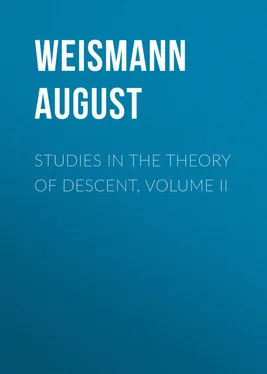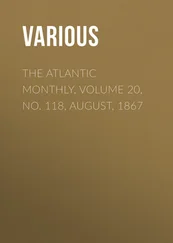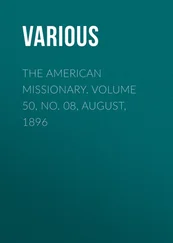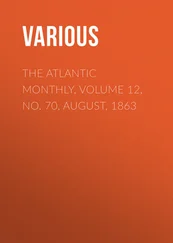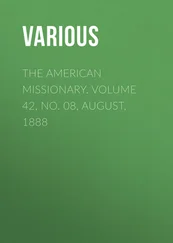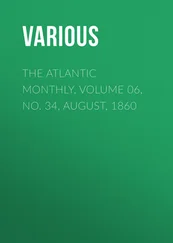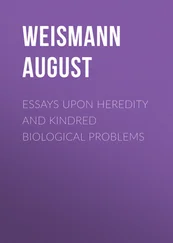August Weismann - Studies in the Theory of Descent, Volume II
Здесь есть возможность читать онлайн «August Weismann - Studies in the Theory of Descent, Volume II» — ознакомительный отрывок электронной книги совершенно бесплатно, а после прочтения отрывка купить полную версию. В некоторых случаях можно слушать аудио, скачать через торрент в формате fb2 и присутствует краткое содержание. Жанр: foreign_antique, foreign_prose, на английском языке. Описание произведения, (предисловие) а так же отзывы посетителей доступны на портале библиотеки ЛибКат.
- Название:Studies in the Theory of Descent, Volume II
- Автор:
- Жанр:
- Год:неизвестен
- ISBN:нет данных
- Рейтинг книги:4 / 5. Голосов: 1
-
Избранное:Добавить в избранное
- Отзывы:
-
Ваша оценка:
- 80
- 1
- 2
- 3
- 4
- 5
Studies in the Theory of Descent, Volume II: краткое содержание, описание и аннотация
Предлагаем к чтению аннотацию, описание, краткое содержание или предисловие (зависит от того, что написал сам автор книги «Studies in the Theory of Descent, Volume II»). Если вы не нашли необходимую информацию о книге — напишите в комментариях, мы постараемся отыскать её.
Studies in the Theory of Descent, Volume II — читать онлайн ознакомительный отрывок
Ниже представлен текст книги, разбитый по страницам. Система сохранения места последней прочитанной страницы, позволяет с удобством читать онлайн бесплатно книгу «Studies in the Theory of Descent, Volume II», без необходимости каждый раз заново искать на чём Вы остановились. Поставьте закладку, и сможете в любой момент перейти на страницу, на которой закончили чтение.
Интервал:
Закладка:
I should not have considered it worth while to have made these remarks if it had not been for the fact that the caterpillars of V. Io and V. Antiopa differ in small particulars from one another and from the other species of the genus. These differences relate to the number and position of the spines, as can be seen from the following table: —
Species of the Genus Vanessa, Fabr.

This character of the number of spines will not be considered as too unimportant when we observe how perfectly constant it remains in the nearly allied species. This is the case in the three consecutive forms, Urticæ , Polychloros , and Ichnusa . Now when we see that two species which differ in their imaginal characters present correspondingly small differences in their larvæ, this exact systematic congruence indicates a completely parallel phyletic development.
Exceptions are, however, to be met with here. Thus, Hübner has united one group of the species of Vanessa into the genus Pyrameis just mentioned, on account of certain characteristic distinctions of the butterflies. I do not know, however, how this genus admits of being grounded on the structure of the larvæ; the latter, as appears from the above table, agree exactly in the number and position of the spines with the caterpillars of Vanessa ( sensû strictiori ), nor can any common form of marking be detected which would enable them to be separated from Vanessa .
Still more striking is the incongruence in the genus Araschnia , Hübn. ( A. Prorsa-Levana ), which, like the genus Pyrameis , is entirely based on imaginal characters. This is distinguished from all the other sub-genera of the old genus Vanessa by a small difference in the venation of the wings (the discoidal cell of the hind-wings is open instead of closed). Now it is well-known that in butterflies the wing-venation, as most correctly shown by Herrich-Schäffer, is the safest criterion of “relationship.” It thus happens that this genus, typified by the common Levana , is in Kirby’s Catalogue separated from Vanessa by two genera, and according to Herrich-Schäffer 18 18 “Prodromus Systematis Lepidopterorum.” Regensburg, 1864.
by forty genera! Nevertheless, the larvæ agree so exactly in their spinal formula with Grapta that we should have no hesitation in regarding them as a species of this sub-genus. It appears to me very probable that in this case the form-relationship of the caterpillar gives more correct information as to the blood-relationship of the species than that of the imago – in any case the larvæ show a different form-relationship to the imagines.
Just as in the case of butterflies there are many genera of Sphingidæ which can be based on the structure of the larvæ, and which agree with those founded on the imagines.
Thus, the genus Macroglossa is characterized by a straight anal horn, a spherical head, and by a marking composed of longitudinal stripes, these characters not occurring elsewhere in this combination. The nearly allied genus Pterogon , on the other hand, cannot be based on the larvæ only, since not only is the marking of the adult larva very distinct in the different species, but the anal horn is present in two species, whilst in a third ( P. Œnotheræ ) it is replaced by a knob-like eye-spot. The genus Sphinx ( sensû strictiori ) is distinguished by the simple, curved caudal horn, the smooth, egg-shaped head and smooth skin, and by a marking mainly composed of seven oblique stripes. The genus Deilephila is distinguished from the preceding by a dorsal plate, situated on the prothorax and interrupting the marking, as well as by the pattern, which here consists of a subdorsal line with ring-spots more or less numerous and developed; the skin also is rough, “shagreened,” although it must be admitted that there are exceptions ( Vespertilio ). The genus Chærocampa admits also of being based on the form-relationship of its caterpillars, although this is certainly only possible by disregarding the marking and taking alone into consideration the peculiar pig-like form of the larvæ. The genus Acherontia , so nearly related to Sphinx , possesses in the doubly curved caudal horn a character common to the genus (three species known 19 19 [The larva of Acherontia Morta , figured by Butler (see note 121, p. 262), possesses the characteristically recurved horn; that of Ach. Medusa figured by the same author, does not appear to possess this character in any marked degree. R.M.]
). Finally may be mentioned the genus Smerinthus , of which the larvæ, by their anteriorly tapering form, their shagreened skin and almost triangular head with the apex upwards, their simply curved anal horn, and by their seven oblique stripes on each side, constitute a genus as sharply defined as that formed by the moths.
Although in all the systematic divisions hitherto treated of there are cases where the form-relationship of the larva does not completely coincide with that of the imago, such incongruences are of far more frequent occurrence in the smallest systematic group, viz. species.
The larvæ of two species have very frequently a much nearer form-relationship than their imagines. Thus, the caterpillars of Smerinthus Ocellatus and S. Populi are closely allied in structure, marking, and colouring, whilst the moths in these two last characters and in the form of the wings are widely separated. 20 20 [See note 97, p. 233. R.M.]
Judging from the larvæ we should expect to obtain two very similar moths, but in fact both Populi and Ocellatus have many near allies, and these closely related species sometimes possess larvæ which differ more widely than those of more distantly related species of imagines.
Thus, in Amur-land and North America there occur species of Smerinthus which closely resemble our Ocellatus in colour, marking, and form of wing, and which possess the characteristic large blue ocellus on the hind-wings. S. Excæcatus is quite correctly regarded as the representative American form of our Ocellatus , but its caterpillar, instead of being leaf-green, is of a chrome-yellow, and possesses dark green instead of white oblique stripes, and has moreover a number of red spots, and a red band on the head – in brief, in the very characters (colour and certain of the markings) in which the imagines completely agree it is widely different from Ocellatus . It appears also to be covered with short bristles, judging from Abbot and Smith’s figure. 21 21 Loc. cit. Pl. XXV. [This species is referred by Butler to the genus Paonias , Hübn. R.M.]
Just in the same way that the species having the nearest conceivable form-relationship to Ocellatus possesses a relatively strongly diverging larva, so does the nearest form-relation of Populi (imago) offer a parallel case. This species, which is also North American, lives on Juglans Alba . The imago of Smerinthus Juglandis differs considerably from S. Populi in the form of the wings, but it resembles the European species so closely in marking and colouring that no doubt can exist as to the near relationship of the two forms. The caterpillar of S. Juglandis , 22 22 Abbot and Smith, Pl. XXIX. [Placed by Butler in the genus Cressonia , Grote and Robinson. Abbot and Smith state that this larva is sometimes green. According to Mr. Herman Strecker (Lepidop. Rhopal. and Hetero, Reading, Pa. 1874, p. 54) it feeds upon black walnut ( Juglans Nigra ), hickory ( Carya Alba ), and ironwood ( Ostrya Virginica ). Of the North American species of Smerinthus , the following, in addition to Excæcatus , closely resemble our Ocellatus : — S. (Calasymbolus) Geminatus , Say; (C.) Cerisii , Kirby; and Ophthalmicus , Boisd. In addition to S. (Cressonia) Juglandis , S. (Triptogon) Modesta much resembles our Populi . The larva of Geminatus , according to Strecker, is “pale green, lightest above, with yellow lateral granulated stripes; caudal horn violet; stigmata red. It feeds on the willow.” R.M.]
however, differs to a great extent from that of Populi in colour – it is not possible to confound these two larvæ; but those of Populi and Ocellatus are not only easily mistaken for one another, but are distinguished with difficulty even by experts.
Интервал:
Закладка:
Похожие книги на «Studies in the Theory of Descent, Volume II»
Представляем Вашему вниманию похожие книги на «Studies in the Theory of Descent, Volume II» списком для выбора. Мы отобрали схожую по названию и смыслу литературу в надежде предоставить читателям больше вариантов отыскать новые, интересные, ещё непрочитанные произведения.
Обсуждение, отзывы о книге «Studies in the Theory of Descent, Volume II» и просто собственные мнения читателей. Оставьте ваши комментарии, напишите, что Вы думаете о произведении, его смысле или главных героях. Укажите что конкретно понравилось, а что нет, и почему Вы так считаете.
